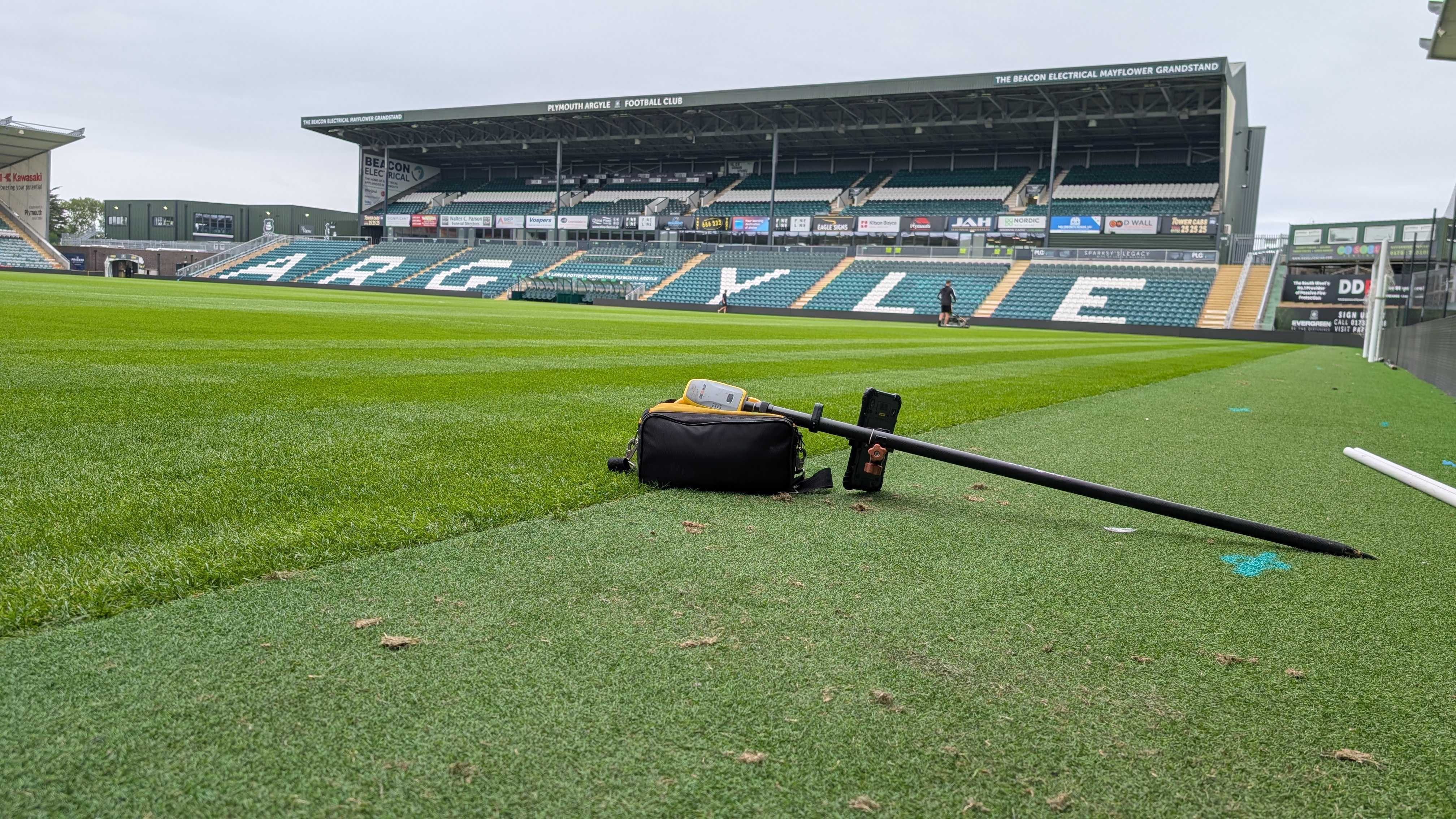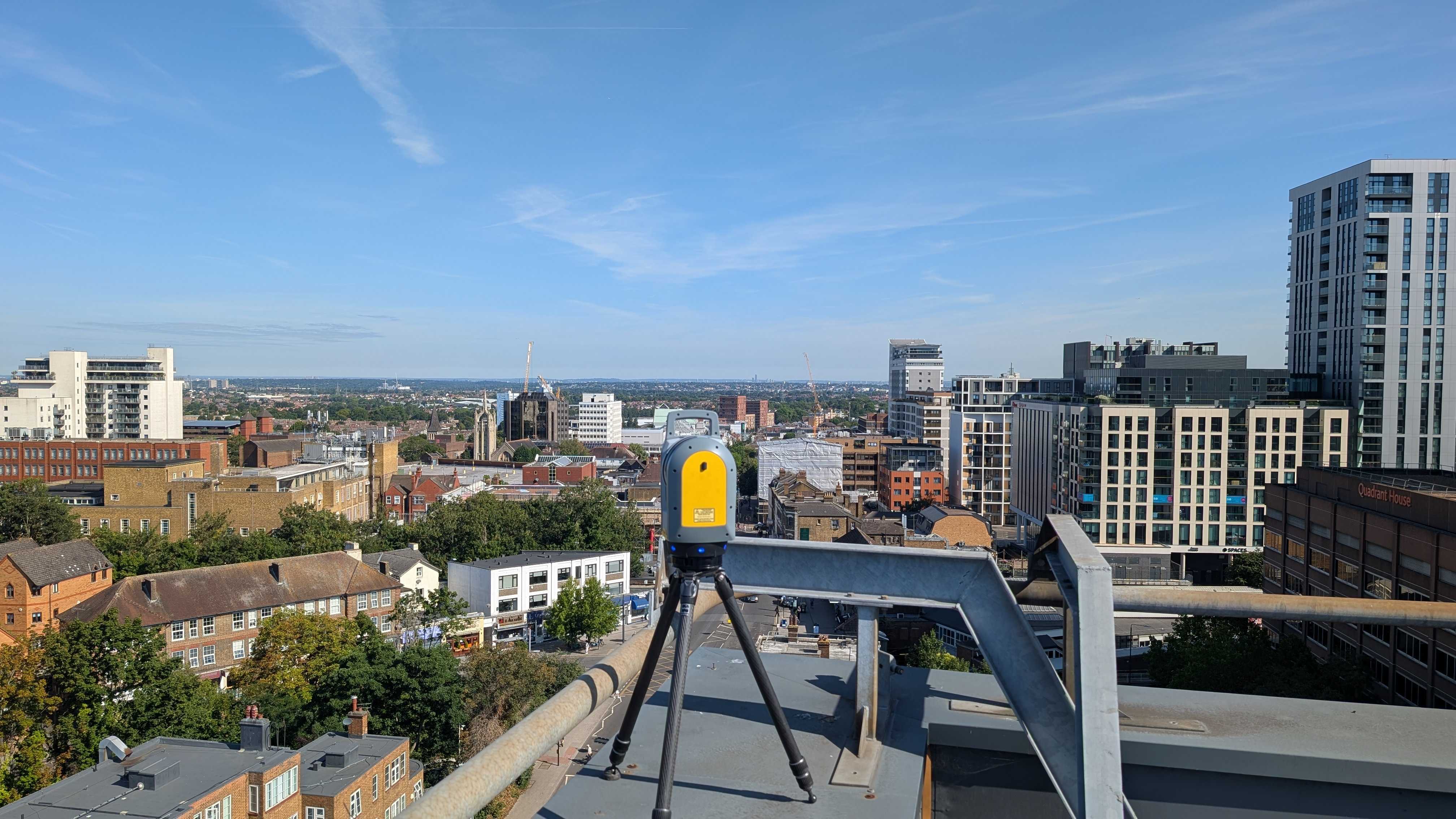In construction management, time and money are the ultimate focus.
As construction managers, you are in charge of balancing budgets, schedules, and quality.
Every delay, every misstep, chips away at your efficiency and profitability. This is where the choice of surveying approach steps in as a game-changer.
GPR emerges as a beacon of efficiency, capable of revealing subsurface complexities without causing disruptions. On the other hand, traditional surveying methods, such as topographical surveying, stand as proven pillars of accuracy. This is what makes benefitting from the two so important.
Unveiling the Core Concepts: GPR and Traditional Survey Methods
Before we dive into the specifics, let's lay down the foundation by understanding the core principles behind Ground Penetrating Radar (GPR) and topographical surveying.
As construction managers, it’s crucial to have a full understanding of the different survey options available to you, in order to choose the right option for your project. Furthermore, it is crucial to be confident that your survey is being carried out with the right methodology. A PAS128 compliant survey is a survey compliant with specific methodology within the UK to make sure all projects are focused on accuracy.
Ground Penetrating Radar, often referred to as GPR, operates on the principle of electromagnetic pulse transmission and reception. This cutting-edge technology allows you to peer beneath the surface without excavating, providing a unique window into the hidden world below.
On the other hand, traditional surveying methods such as topographical surveying, allow you to see specific objects.
So, what are the benefits of these different survey methods and how can they work together to give you a clear understanding of the project at hand?
Advantages of Ground Penetrating Radar (GPR)
In the fast-paced world of construction management, time is of the essence. Ground Penetrating Radar (GPR) emerges as a powerful ally. GPR generates vivid 2D and 3D images of subsurface structures, empowering you to make informed decisions based on clear, data-driven visuals.
GPR's non-intrusive nature minimises disruptions on your construction site. This means that your project doesn’t need to be delayed as a result of the tests that need to be done.
Furthermore, GPR's ability to detect buried utilities, structures, and anomalies enhances site safety. By eliminating surprises and potential delays, you can confidently navigate your projects.
As construction managers, your ultimate goal is to optimise project efficiency. GPR's speed, accuracy, and non-invasive nature align with these aspirations.
The Strengths of Traditional Survey Methods
While Ground Penetrating Radar (GPR) brings innovation to the table, traditional surveying methods have stood as the bedrock of construction projects for decades.
Traditional methods excel in providing accurate measurements of surface features, elevations, distances, and angles. These precise data points serve as the foundation for precise project planning and execution.
Some traditional survey methods are:
- Total station surveys
- Levelling
- Triangulation
Many construction professionals are well-versed in traditional methods, which can simplify on-site implementation. This familiarity often contributes to smoother workflows and streamlined communication.
Weighing Limitations: Drawbacks of Ground Penetrating Radar and Traditional Surveying Methods
While Ground Penetrating Radar (GPR) and traditional surveying methods offer substantial benefits, it's essential to be aware of their limitations as well.
Each approach has its challenges that you should consider.
For GPR surveys:
- Depth Limitations: GPR's ability to penetrate the ground is influenced by factors such as soil composition and antenna frequency.
- Data Interpretation Complexity: Interpreting GPR data requires expertise. Without proper training to become a utility surveyor, distinguishing between different subsurface materials and features can be challenging.
- Subsurface Conditions: Variations in soil moisture, rock types, and other subsurface factors can impact the quality of GPR results.
For traditional methods:
- Time consuming process: Traditional methods involve point-to-point measurements, making them time-intensive for large projects. This can lead to extended project timelines.
- Surface-Only Measurements: Traditional methods don't provide insights into subsurface features, potentially missing critical information that could impact construction planning.
By understanding these limitations, you can make informed choices that align with your project's goals and constraints.
How You Can Make The Right Survey Method Work For You
In the realm of construction management, where time and resources are precious commodities, using a GPR survey to locate objects, then a topological survey to give you more information, will benefit your project.
Both approaches bring unique strengths and limitations to the table, each suited to specific project needs. Ground Penetrating Radar offers the advantage of rapid, non-invasive data collection, unveiling subsurface mysteries efficiently. Traditional surveying methods, on the other hand, offer accuracy and reliability, providing the essential surface measurements that underpin construction projects.
If you are keen to find out more about GPR surveys, and topographical surveys, make sure to get in touch with a company like Intersect Surveys for assistance.
By speaking to one of the team, you can gain further insights into how a survey can help your project, and which survey you should opt for.
FAQs
- What Exactly Is Ground Penetrating Radar (GPR)?
Ground Penetrating Radar (GPR) is a geophysical technique that uses electromagnetic pulses to investigate subsurface structures and materials without excavation. It's especially useful for detecting buried utilities, voids, and anomalies.
- How Do Traditional Surveying Methods Differ From GPR?
Traditional surveying methods involve direct measurements using tools like total stations, levels, and theodolites. GPR focuses on subsurface investigations, providing insights into what lies beneath the ground.
- Why Is GPR Considered Non-Invasive?
GPR emits electromagnetic waves that penetrate the ground without physically disturbing it. This non-invasive nature reduces disruptions on construction sites and minimises the need for excavation.
- What Are The Primary Drawbacks Of GPR?
GPR's limitations include depth restrictions, as its penetration depends on soil composition, and the complexity of interpreting data. Subsurface conditions also impact the quality of results.
- Which Approach Is Best For My Construction Project: GPR Or Traditional Surveying Methods?
The choice depends on your project's objectives, budget, timeline, and the importance of subsurface data. While GPR excels in uncovering hidden structures, traditional methods offer accurate surface measurements. Often, a combination of both approaches can provide a comprehensive solution tailored to your needs.








